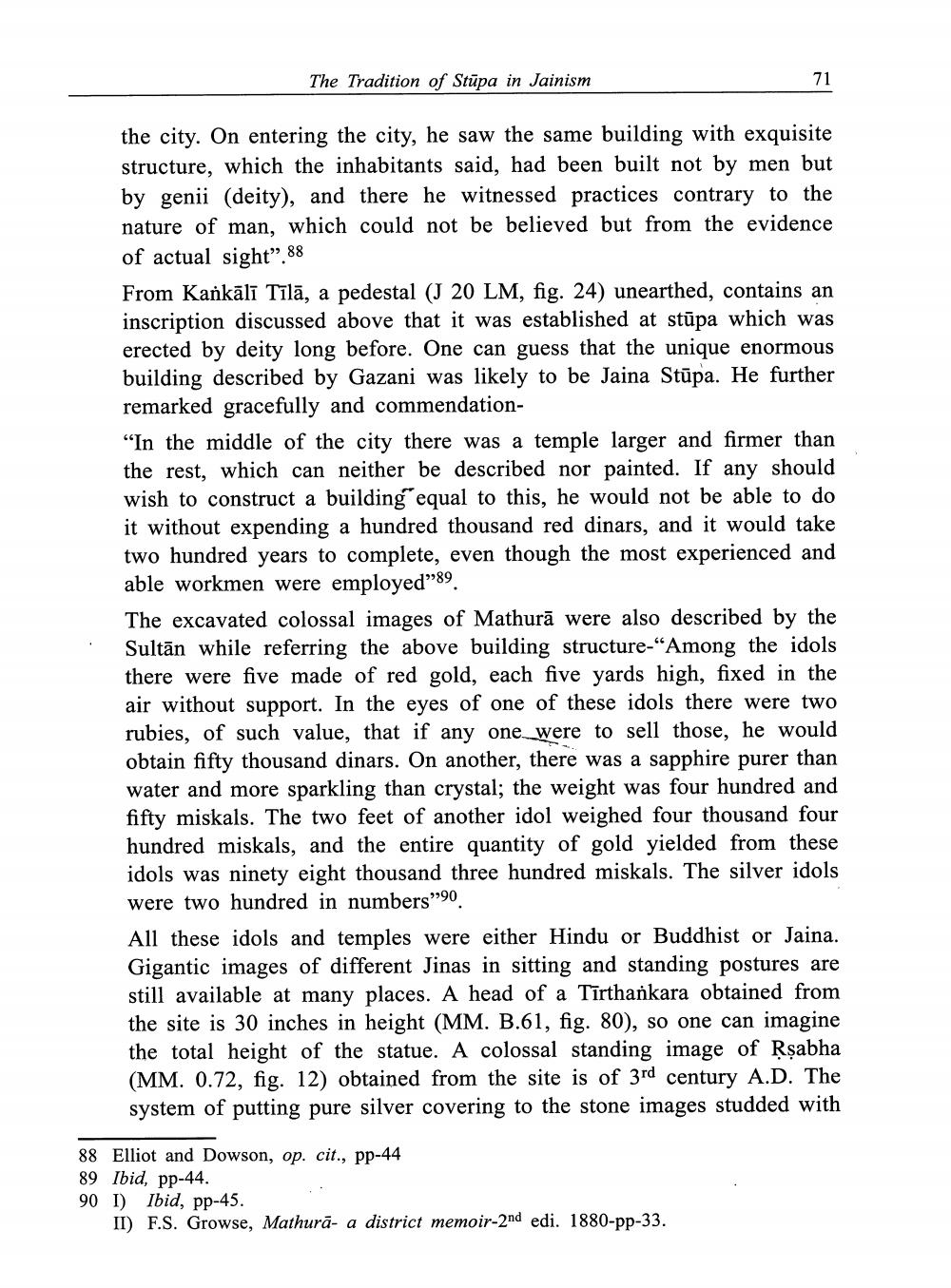________________
The Tradition of Stūpa in Jainism
the city. On entering the city, he saw the same building with exquisite structure, which the inhabitants said, had been built not by men but by genii (deity), and there he witnessed practices contrary to the nature of man, which could not be believed but from the evidence of actual sight". 88 From Kankālī Tīlā, a pedestal (J 20 LM, fig. 24) unearthed, contains an inscription discussed above that it was established at stūpa which was erected by deity long before. One can guess that the unique enormous building described by Gazani was likely to be Jaina Stūpa. He further remarked gracefully and commendation"In the middle of the city there was a temple larger and firmer than the rest, which can neither be described nor painted. If any should wish to construct a building equal to this, he would not be able to do it without expending a hundred thousand red dinars, and it would take two hundred years to complete, even though the most experienced and able workmen were employed”89. The excavated colossal images of Mathurā were also described by the Sultān while referring the above building structure-“Among the idols
were five made of red gold, each five yards high, fixed in the air without support. In the eyes of one of these idols there were two rubies, of such value, that if any one_were to sell those, he would obtain fifty thousand dinars. On another, there was a sapphire purer than water and more sparkling than crystal; the weight was four hundred and fifty miskals. The two feet of another idol weighed four thousand four hundred miskals, and the entire quantity of gold yielded from these idols was ninety eight thousand three hundred miskals. The silver idols were two hundred in numbers”90. All these idols and temples were either Hindu or Buddhist or Jaina. Gigantic images of different Jinas in sitting and standing postures are still available at many places. A head of a Tīrthankara obtained from the site is 30 inches in height (MM. B.61, fig. 80), so one can imagine the total height of the statue. A colossal standing image of Rşabha (MM. 0.72, fig. 12) obtained from the site is of 3rd century A.D. The system of putting pure silver covering to the stone images studded with
88 Elliot and Dowson, op. cit., pp-44 89 Ibid, pp-44. 90 I) Ibid, pp-45.
II) F.S. Growse, Mathurā- a district memoir-2nd edi. 1880-pp-33.




